How to Summarize An Article | Guide & Tips
When you summarize an article, it usually means giving a concise overview of a text’s main points in your own words. A summary is always much shorter than the original text. When you don’t have time to read a full article, an article summary can give you the information you’re looking for.
Tell you the truth, it’s not easy to summarize an article.There are many things you should consider when writing a summary. In this blog, I will introduce you to the most important things you should know about how to summarize an article. After you read it, I believe you will be able to write a good summary.
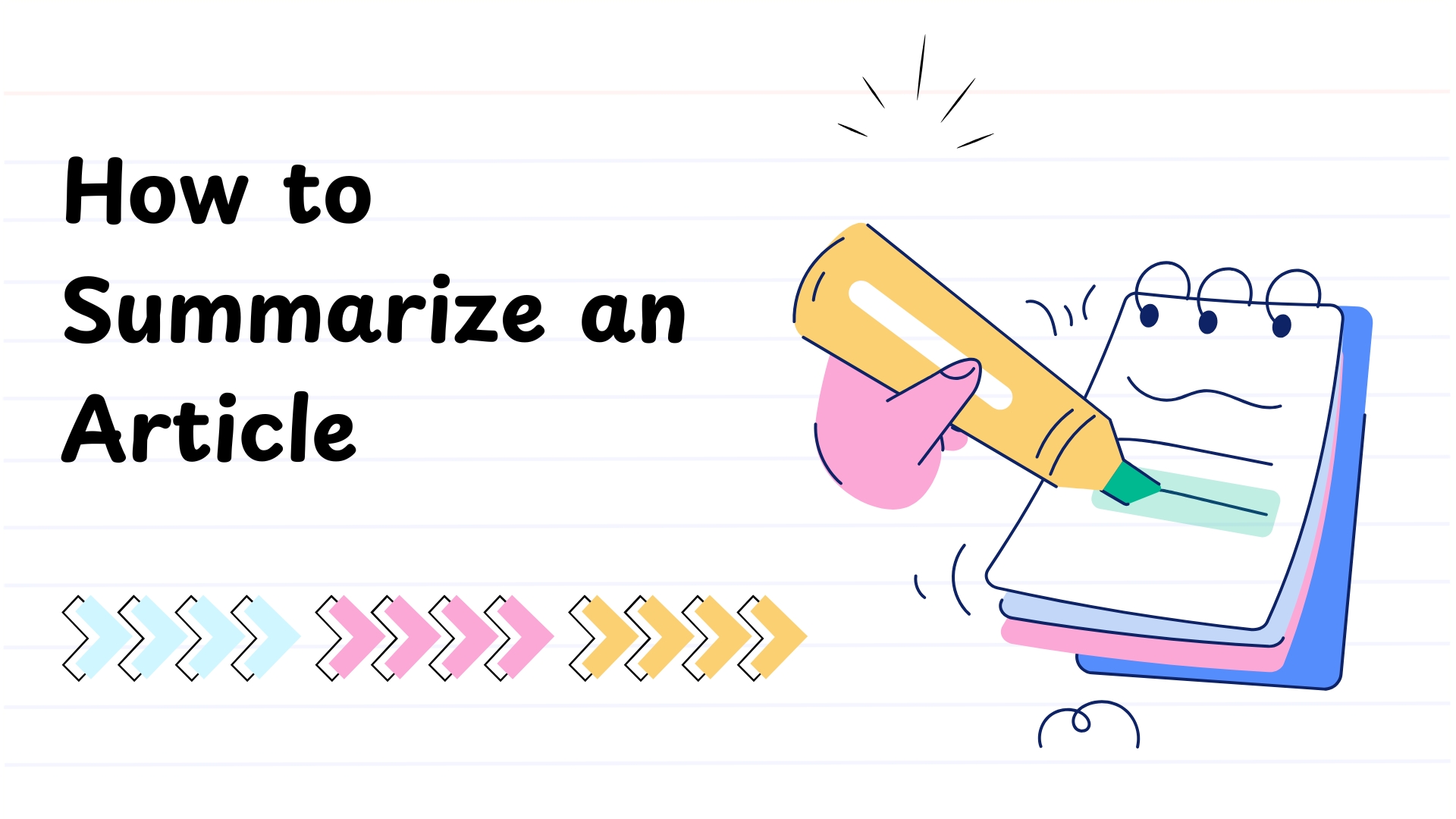
1. Why you need to know how to summarize an article?
An article summary is an overview of an article that highlights its key points. An effective summary does not include all the article’s specific details; it simply acts as a preview that can help readers decide whether to read the full version.
Learning how to summarize an article is crucial because it helps you handle texts more effectively. For instance, imagine you’re writing an essay and need to refer to three academic articles. By including short summaries of these articles, you can clearly explain why they’re important without getting lost in unnecessary details. In other words, summarizing saves time and helps you convey the main ideas concisely.
Besides, learning how to summarize an article is not just learning a tool for simplifying information. It helps you think critically, improve comprehension, and communicate effectively. By mastering the art of summarizing, you can distill complex ideas into actionable insights, making learning and decision-making more efficient.
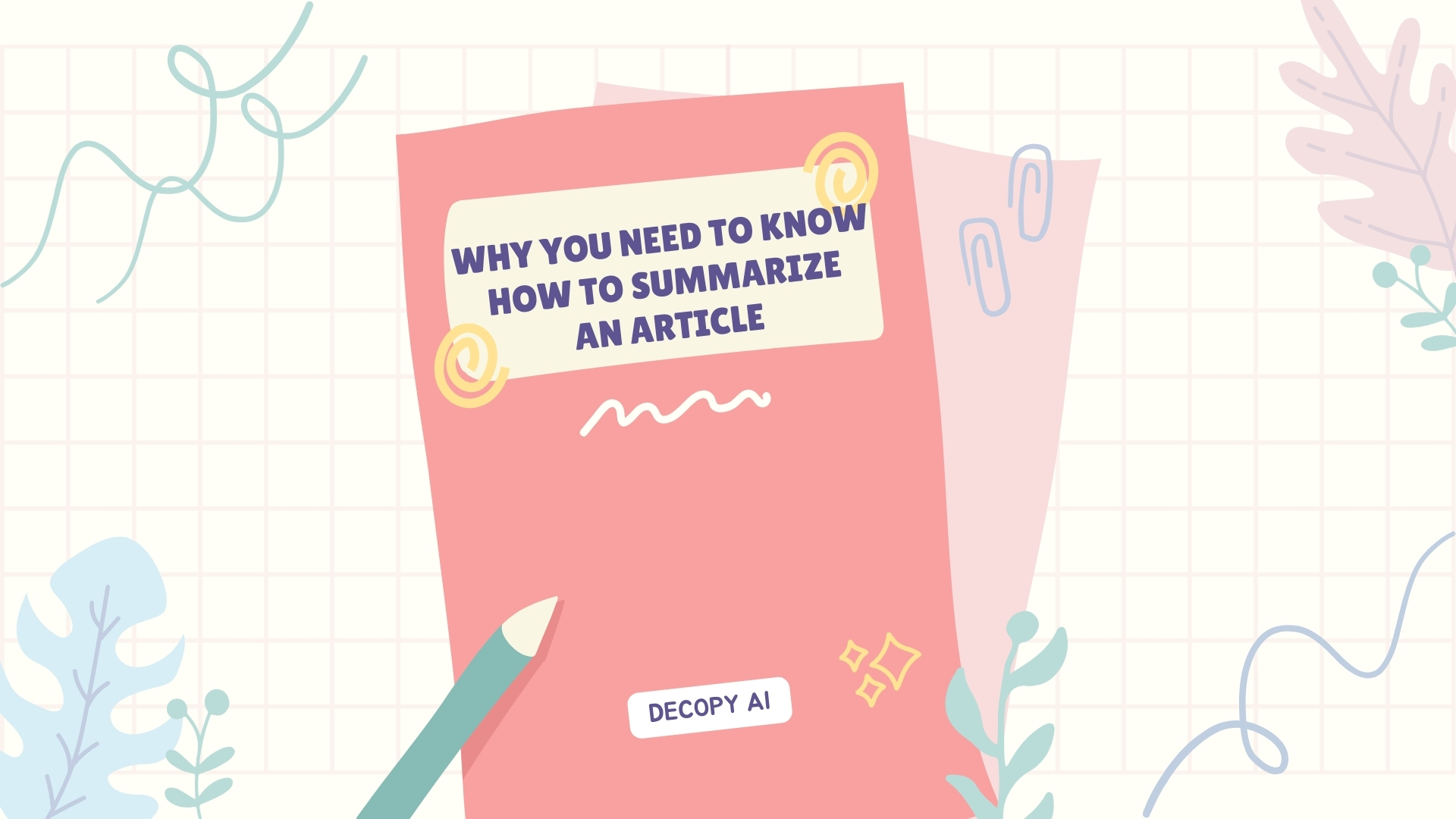
2. Prepare to Summarize: Reading and Understanding
Learning how to summarize an article effectively starts with a thorough understanding of the article you are working with. This foundational step ensures you can identify the key points and articulate them accurately. Below are several detailed strategies and tips to help you prepare to summarize by reading and understanding the text effectively.
Step 1. Skim for an Overview
Before diving deep, skim the article to get a general idea of its content. Look for headings, subheadings, and keywords that give clues about the topic and structure. Pay special attention to the title, as it often encapsulates the central theme of the article. The abstract (if available) and introductory paragraph can also provide to summarize quickly of the author's main point.
Step 2. Read Actively, Not Passively
Active reading involves engaging with the text rather than simply scanning it. Use the following techniques to ensure you’re absorbing the material:
Highlight or Underline Key Ideas: As you read, mark sentences or phrases that stand out as crucial to the writer’s argument.
Take Notes: Write down the main ideas in your own words. Remember to summarize at this stage, even informally, can help you process the content.
Ask Questions: Continuously ask yourself what the author is trying to convey. For instance: What is the main argument? Why is this point important?
Step 3. Break the Article into Sections
Many articles are organized into distinct sections, such as an introduction, body paragraphs, and a conclusion. By breaking the text into these smaller parts, you can tackle one section at a time. Summarize each section separately before piecing them together into a cohesive summary.
Step 4. Focus on the Thesis Statement
The thesis statement is the backbone of the article, encapsulating its primary argument or purpose. It’s often located in the introduction or conclusion. Identifying this statement early will help you stay focused on what the author considers most important.
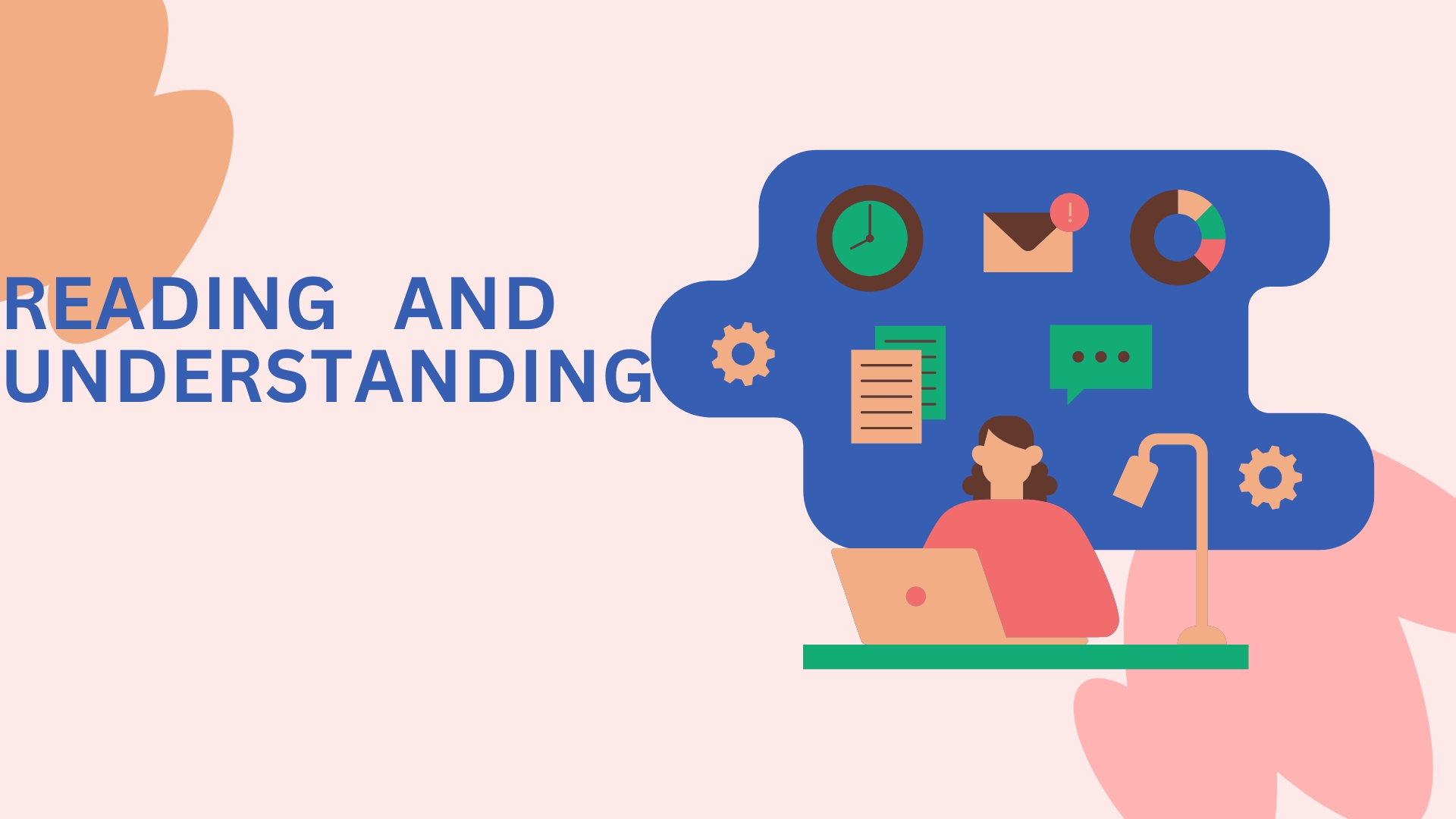
3. Summarize in your own words
Next, summarize the article in your own words. Don’t worry about making it perfect; this is just the first draft. Aim to write no more than 250 words, or about a paragraph or two.
When you write a summary, you’re not copying the original article’s text verbatim. Rather, you’re writing a shortened version that skips to the main idea. You can do this by starting your summary with a shortened version of the article’s thesis statement, put into your own words. You can also start with a brief statement of the original’s position, then follow it with the most important supporting argument. To avoid plagiarism issues, be sure to cite the article’s title and author in your summary.
4. Revise and Edit Your Summary
After you’ve written a summary, take a moment to read it with a critical eye. As you read, note any grammatical mistakes you’ve made or places in your writing where you can improve its clarity. Then, make the necessary edits to polish it into a sparkling second draft.
Decopy AI can help you with this part. With Decopy AI summarizer tool, to summarize an article is fast and easy. You can use it to summarize an essay in just a few clicks, and we support you to upload your own documents, such as PDF, DOCX, PPT, and TXT files. Remember, though, that tools like these exist to help with your writing, not do the work for you to get the best results, summarize an article yourself, then use AI to catch mistakes and show you places where you can strengthen your writing.
5. Use Tools to Help You Promote Writing
Using our summarizer tool to summarize an article can be a great way to improve your writing. It can help you identify the key points and ideas in the article, and then write a concise summary that highlights those key points. And it is really easy to use.
Step 1. Type、paste or Upload your text.
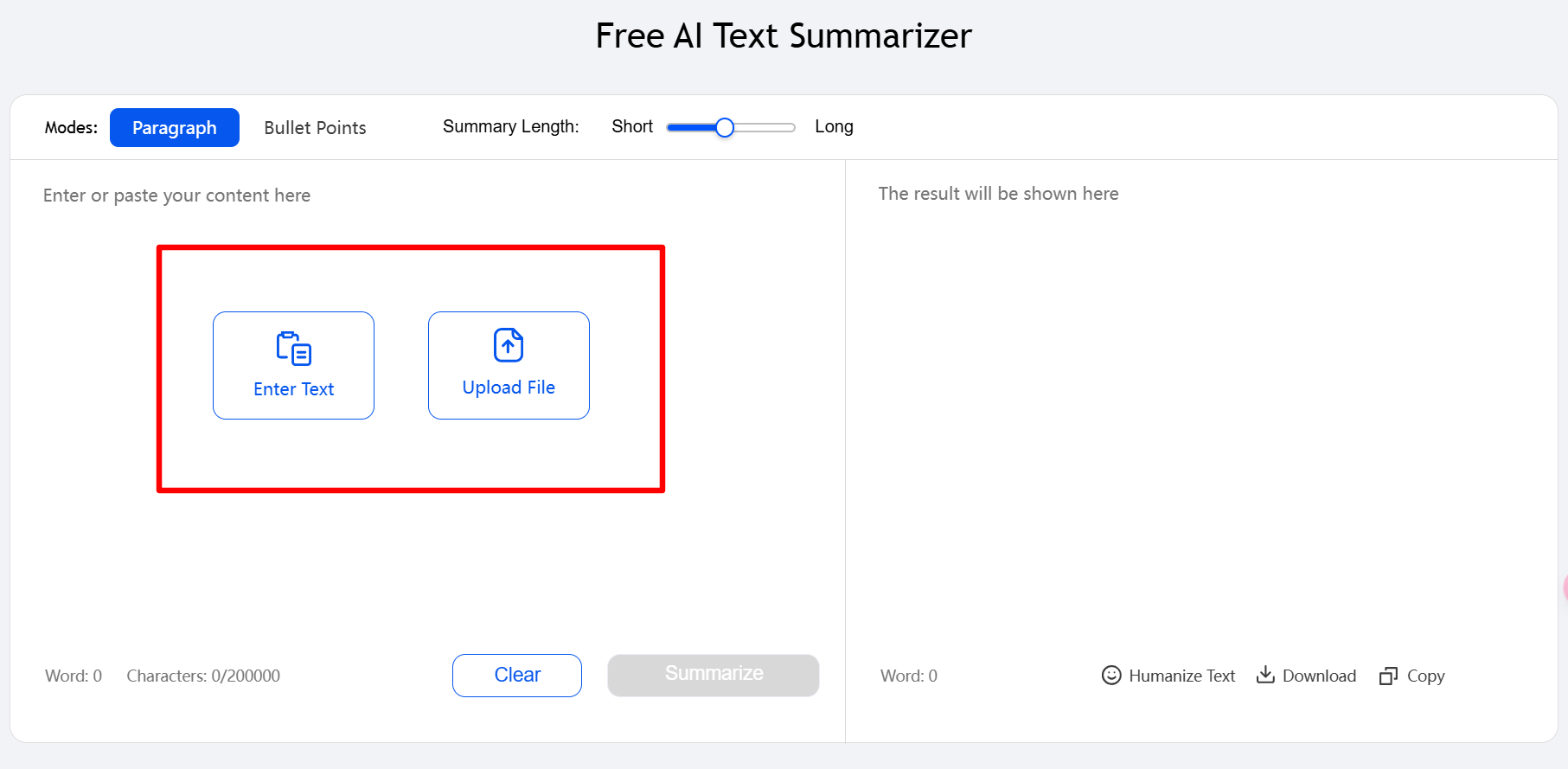
Step 2. Choose you want to summary mode.
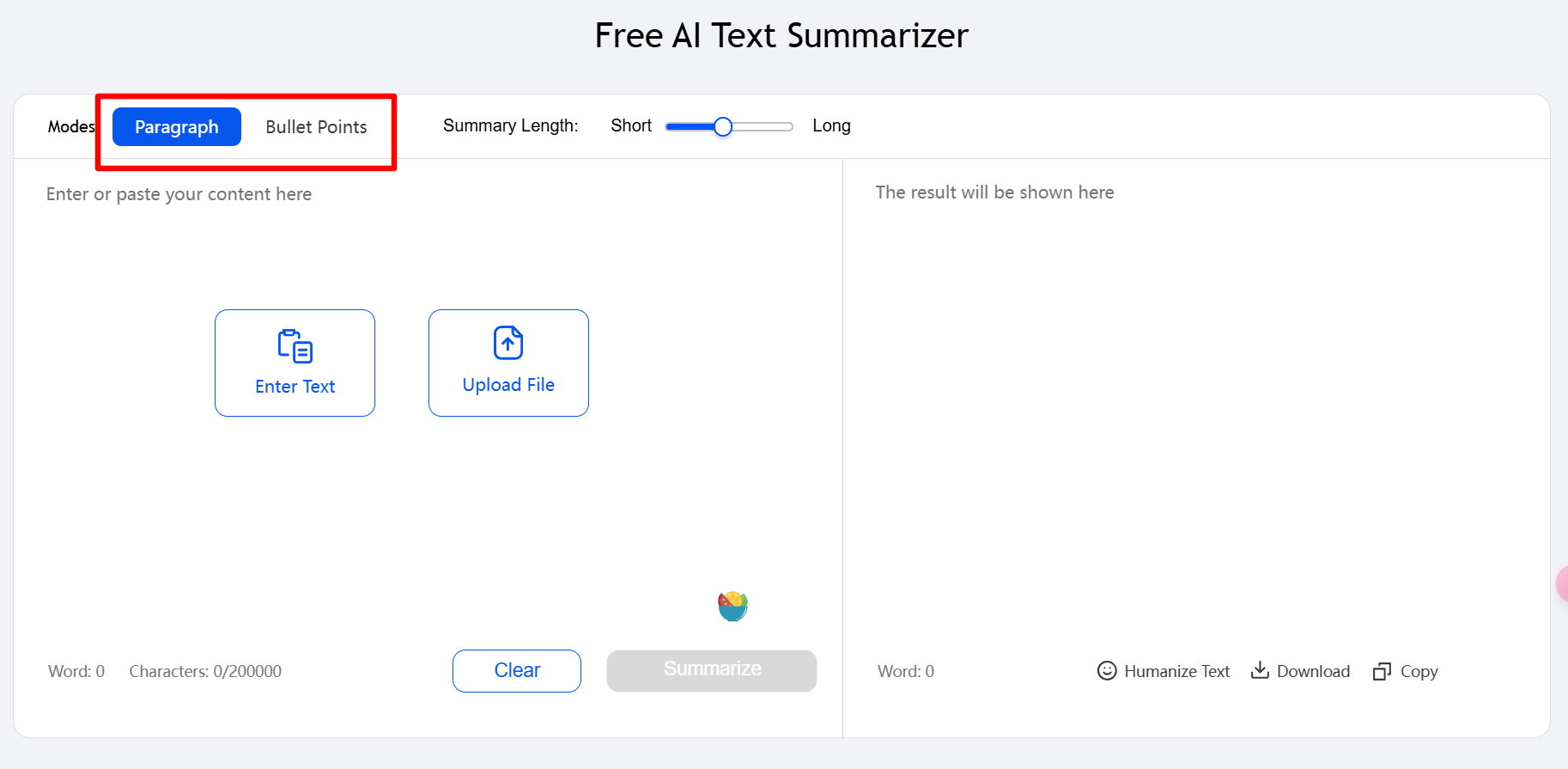
Step 3. Select your AI summary length
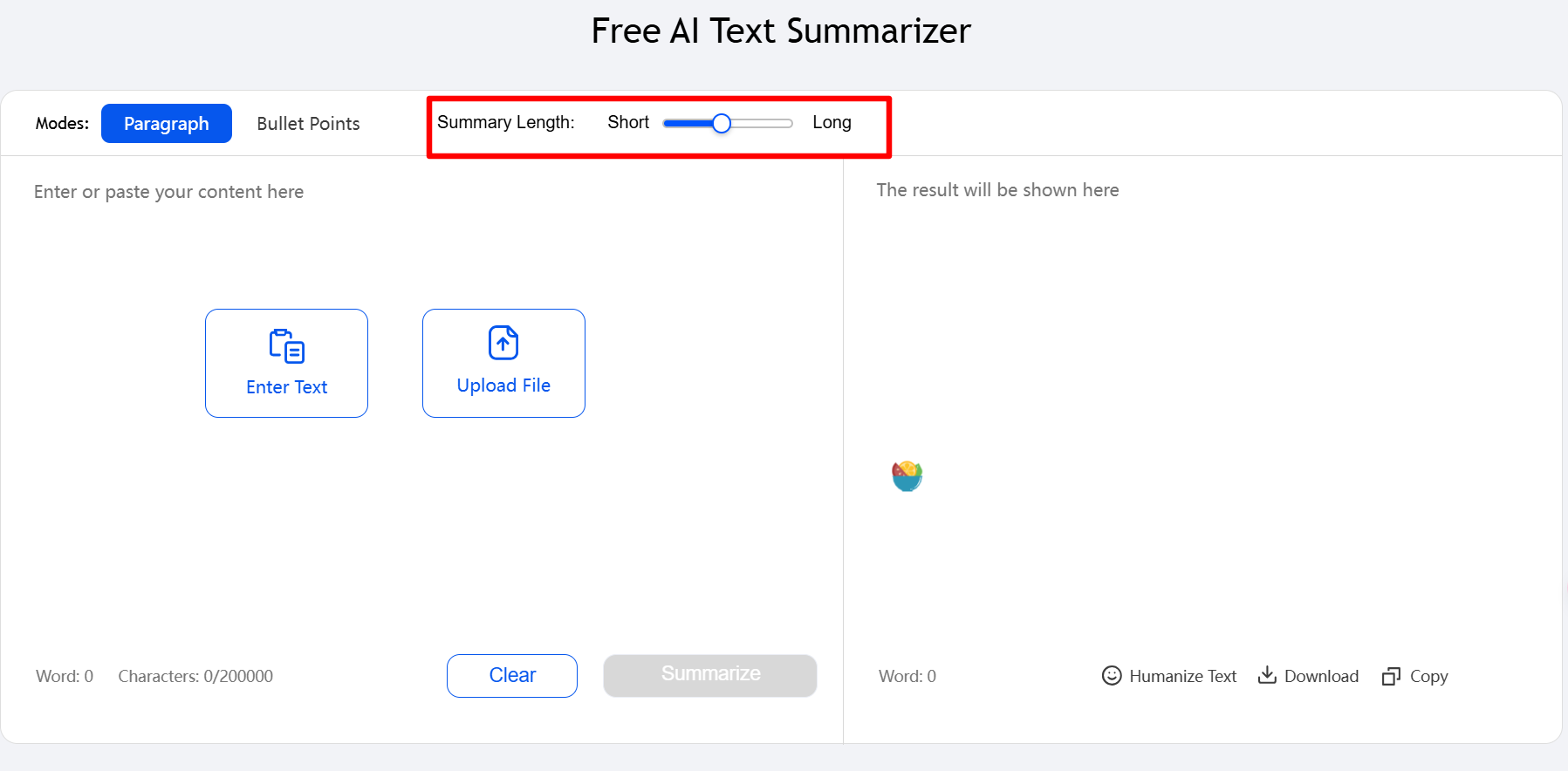
Step 4. With one click on 'Summarize', generate summary.
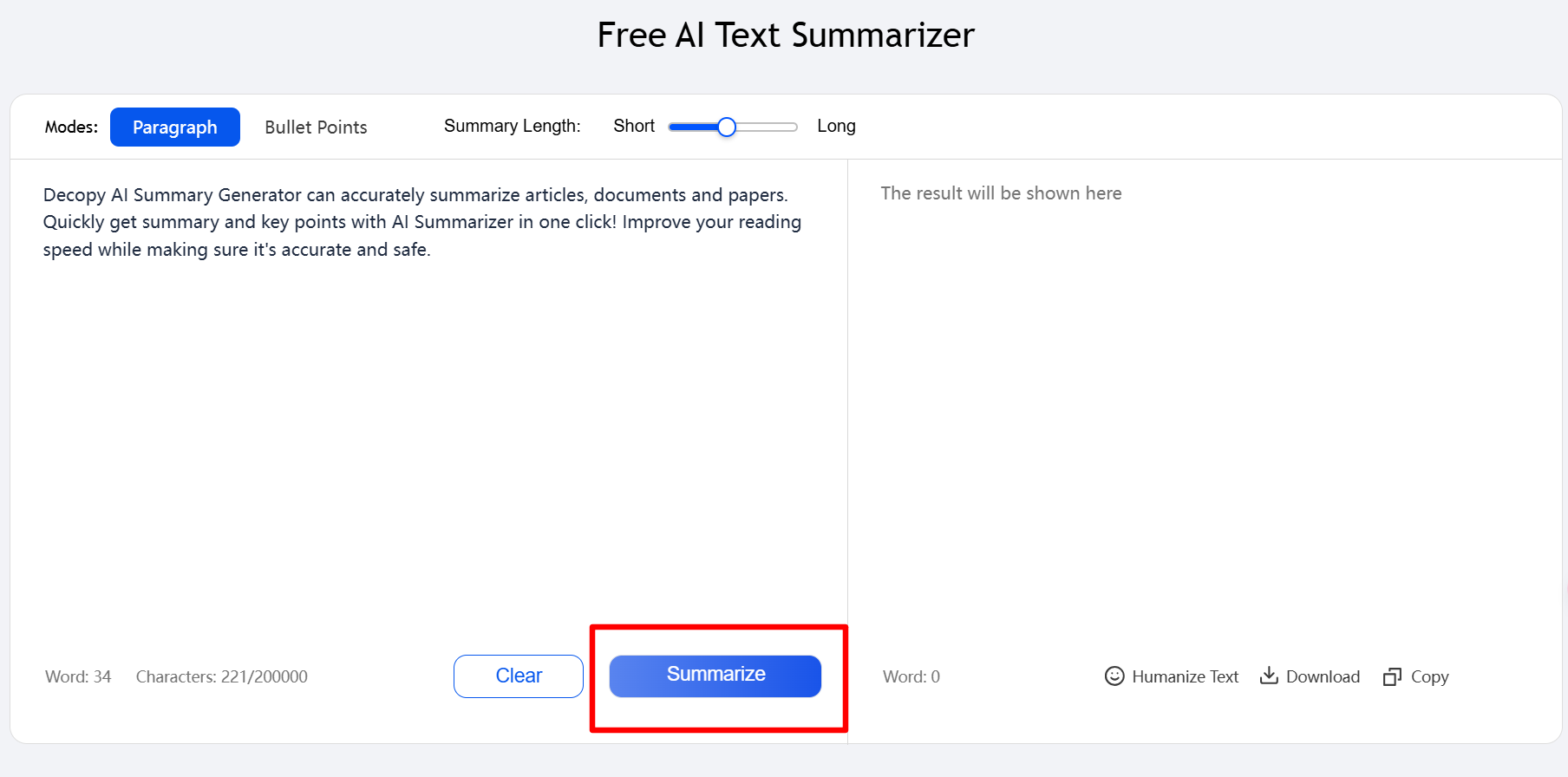
If you are not satisfy with our AI summary, you can ask Decopy AI Humanizer to help you. Free AI humanizer is an accurate and efficient AI to human text converter. Make your content more human-like and undetectable, easily bypasses AI detection. It naturally supports perfect grammar and multiple languages, high-quality rewritten content, and completely humanized AI text.
6. Tips for Effective Summarization
When you’re taking notes for a summary, bulleted lists can be extremely helpful. Jot down a bulleted list of the article’s main points and the supporting arguments for each of these points.
If you find yourself having a difficult time identifying the main points and supporting arguments, write down the following questions:
What goal is this article trying to achieve? For example, is it trying to inform, persuade, or entertain the reader?
How does the article achieve this goal?
What is the article’s topic?
What is the author’s position regarding the article’s topic?
Then reading again, carefully looking for answers to these questions. Be sure to answer these questions using the text, rather than attempting to fill in the blanks with your own interpretations.
Another important tip is to summarize with your reader in mind. If your summary is intended for an academic audience, you have more leeway to use complex and subject-specific vocabulary than if you were writing for a general audience.
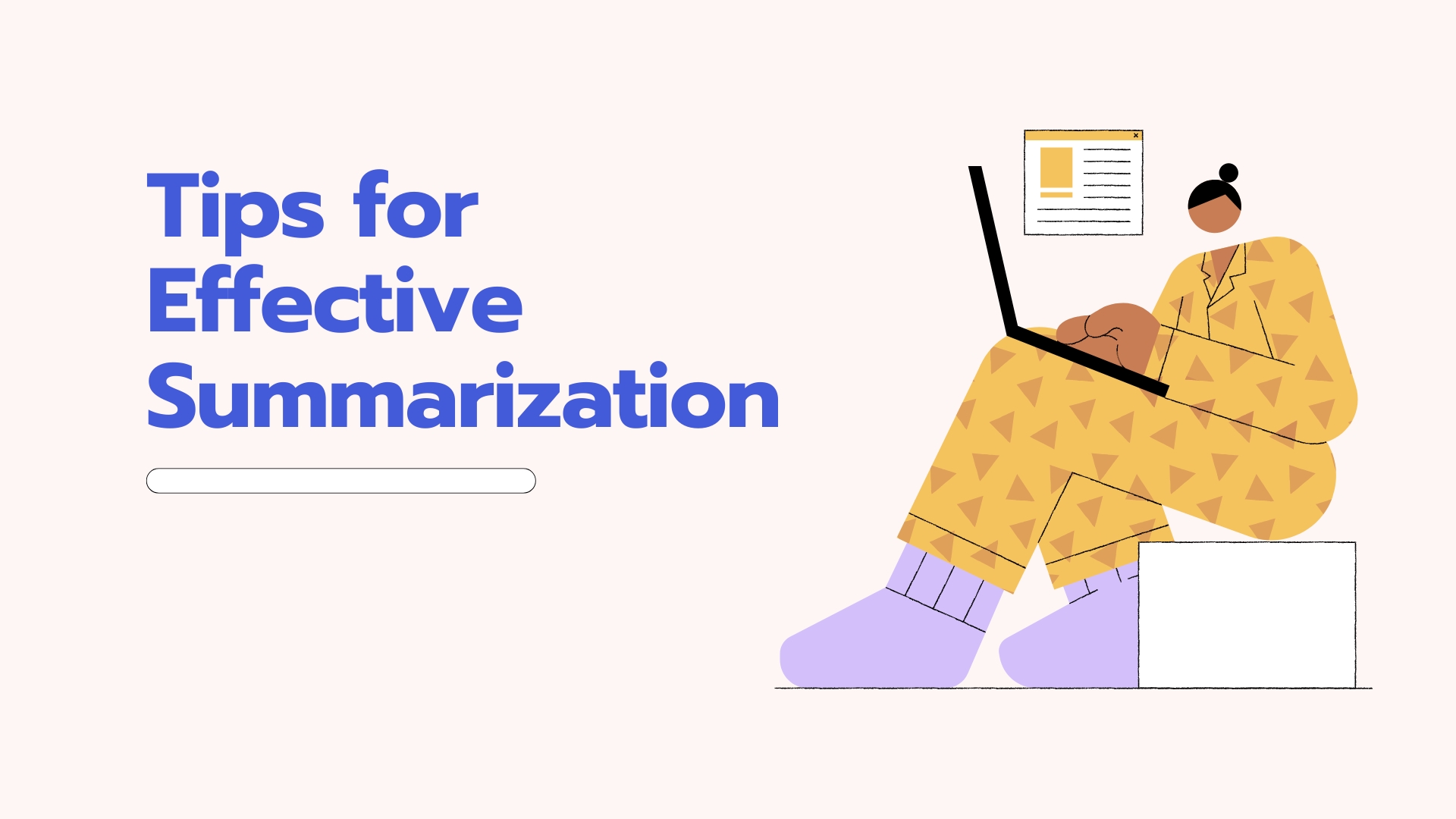
7. Example of a Summary
Let’s summarize an article about the benefits of regular exercise:
Original Excerpt:
"Exercise has profound effects on both physical and mental health. Physically, it strengthens the cardiovascular system, improves flexibility, and helps maintain a healthy weight. Mentally, it reduces stress, combats anxiety, and boosts mood through the release of endorphins. Regular physical activity is essential for overall well-being, and experts recommend at least 30 minutes of exercise most days of the week."
Summarizer:
"The article emphasizes the physical and mental health benefits of regular exercise. It highlights improvements in cardiovascular health, flexibility, and weight management, as well as stress reduction, anxiety relief, and mood enhancement. Experts recommend exercising for at least 30 minutes daily to achieve these benefits."
8. Conclusion
Summarizing an article is both an art and a skill, requiring a balance of comprehension, conciseness, and clarity. By thoroughly understanding the article, identifying its key components, and presenting them in your own words, you can craft summaries that effectively capture the essence of the original text. Whether for academic, professional, or personal purposes, mastering the ability to summarize empowers you to communicate ideas efficiently and focus on what truly matters. With practice and attention to detail, you can turn even the most complex articles into clear and concise summaries that inform and engage your audience.